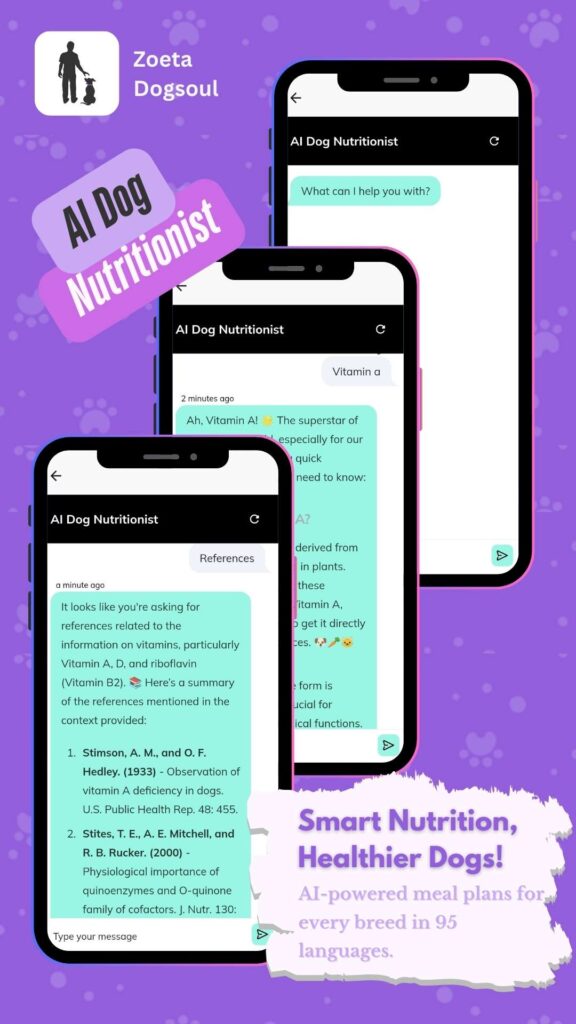Introduction: Why Monitoring Your Dog’s Health Matters
The value of early observation
Caring for your dog goes beyond walks and treats—it’s about staying attentive to subtle body changes. Detecting shifts in your dog’s health early can make a huge difference. Regularly observing their stool, urine, coat, and gums lets you catch health concerns before they become serious emergencies. Think of this as an informative and professional routine that empowers you to support your dog’s wellbeing at home.
Why everyday details are important
Did you know? Small changes in your dog’s poop, pee, fur, or gums can be early warning signs of illness. Dogs can’t always communicate how they feel, but their bodies often reveal clues. For example, differences in stool—like color or texture changes—may point to digestive issues, infection, or parasites. Similarly, changes in urine color or frequency might indicate problems such as dehydration, urinary tract infections, or kidney stress.
Your dog’s coat health is another helpful indicator. A shiny, soft coat usually means all is well, while dull or patchy fur could signal nutritional problems or allergies. Gums tell their own story—healthy gums are moist and pink. Any change in color, especially pale, blue, or yellow, may point to conditions like anemia or liver disease. By keeping an eye on these clear physical signs, you’re using an informative and supportive approach that promotes your dog’s health.
Proactive steps for happier, healthier dogs
Monitoring doesn’t just catch problems early—it also helps improve treatment outcomes and your pet’s quality of life. Quick intervention can prevent minor issues from becoming life-threatening. Plus, tracking observations makes it easier for your veterinarian to provide the best care possible.
Using practical tools—like digital thermometers, urine test strips, and health tracking apps—can make the process easier. Over time, you’ll get to know what’s “normal” for your dog, so any changes become clear. By being proactive and engaged, you ensure each day with your furry friend is as happy and healthy as possible.
Now, let’s look closer at how to recognize what’s normal—and what’s not—when observing your dog’s daily routines.
Understanding Normal vs. Abnormal Dog Poop
What Does Healthy Dog Poop Look Like?
Knowing what’s normal for your dog’s poop is one of the most informative and supportive ways to keep their health on track. A healthy stool is usually brown, shaped like a sausage, and firm but not hard. Most dogs will have a bowel movement one or two times a day, but this can vary depending on their diet and individual habits. Passing stool should be easy and painless for your dog, with no effort or signs of discomfort.
Common Warning Signs in Dog Poop
Observing changes in your dog’s stool can be a professional way to catch early signs of health problems. Some key abnormalities to watch for include:
- Diarrhea: Loose, watery, or frequent stools. This can result from stress, sudden diet changes, infections, or even more serious illnesses. Diarrhea may also appear in different colors, such as green or black, which can signal dietary or medical issues.
- Constipation: Hard, dry stools that are difficult or painful to pass. Causes include dehydration, low fiber diets, blockages, certain medications, or neurological issues. If your dog strains or seems uncomfortable while going, this deserves attention.
- Blood in Stool: The appearance and color of blood matter. Bright red blood often indicates bleeding from the lower gastrointestinal tract, while dark, tarry stools suggest bleeding from higher up. Both should prompt a call to your veterinarian.
- Mucus or Undigested Food: A layer of shiny mucus can be a sign of intestinal inflammation. Pieces of undigested food may signal digestive or absorption issues. These changes can indicate that your dog’s system isn’t functioning as smoothly as it should.
Using the Purina Fecal Scoring Chart
A standardized approach makes monitoring more reliable. The Purina Fecal Scoring Chart is an informative and supportive tool used widely in veterinary practice. This chart visually ranks stool consistency from very hard and dry to watery and unformed. By comparing your dog’s stool to the chart, you can consistently evaluate changes over time and know when something is off.
Did you know? Regularly checking your dog’s poop using these guidelines helps identify problems before they become serious. Early detection and intervention can significantly improve treatment outcomes and quality of life.
Paying close attention to these details at home sets the stage for monitoring other key health markers, creating a proactive and empowered approach to your dog’s wellness.
Decoding Your Dog’s Urine
What Healthy Urine Looks Like
Understanding your dog’s urine is a key part of proactive pet care. Healthy urine in dogs is usually pale yellow to amber. This color signals proper hydration and a well-functioning body. The urine should be clear, not cloudy, and the smell should be fairly mild. Most dogs urinate a few times a day—what’s normal can depend on size, age, diet, and activity.
Regularly checking your dog’s urine offers valuable, informative insight. Noticing subtle changes early lets you respond quickly. We understand that catching small issues before they become big problems can make a big difference for your dog’s well-being.
Warning Signs to Watch For
Some urine changes point to potential health problems and should not be ignored:
- Dark yellow or orange urine can be a sign of dehydration. In more serious cases, it may suggest liver trouble.
- Cloudy urine or urine with a strong, foul smell is often a warning of a urinary tract infection (UTI) or crystals in the urine.
- Blood in the urine (even small amounts) may indicate infection, bladder stones, trauma, tumors, or kidney disease.
- Changes in how often your dog urinates—going more frequently, peeing in larger amounts, or struggling to pee—can signal issues such as kidney disease, diabetes, or other hormonal problems.
- Decreased urine output is also a cause for concern and may point to serious conditions.
By being observant and supportive, you can quickly spot changes and work with your veterinarian for the best outcome, reinforcing an informative approach to home care. 😊
Useful Home Testing Tools
Today, pet owners can use various at-home tools for monitoring. Urine dipsticks are a simple, affordable way to learn more about your dog’s health. These strips test for pH, protein, glucose, and other indicators. While they are a helpful first step for gathering information, remember they are not a replacement for a professional veterinary diagnosis. If you notice unusual results or have concerns, make an appointment with your veterinarian to discuss the findings.
Keeping track of your dog’s urine habits and any changes is an important and professional way to catch health issues early. If there’s ever uncertainty, trust your instincts and seek veterinary guidance.
Your next step as a proactive pet owner is to continue your regular visual checks, building on what you’ve learned as you care for your dog’s overall health.

What Your Dog’s Coat Reveals About Their Health
What a Healthy Coat Looks Like
A shiny, soft, and smooth coat is usually a strong sign your dog is healthy. The fur should lay flat, feel pleasant to the touch, and be free from excessive dandruff, bald spots, or tangles. Most dogs naturally have a bit of seasonal shedding, but excessive hair loss or big patches of missing fur are not typical. Keep an eye out for a clean appearance and a subtle shine—these are positive markers for your dog’s well-being and comfort.
Signs Your Dog’s Coat Needs Attention
Sometimes, changes in your dog’s coat can alert you to health concerns. Here are some common red flags:
- Dullness: If your dog’s coat loses its shine and appears flat or lackluster, this could mean there’s an issue with nutrition, hormones, or internal illness. Even parasites may cause dull fur.
- Greasy or Oily Texture: If your dog’s fur feels sticky, oily, or appears clumped together, your pup might have seborrhea or other underlying conditions. Too much oil is often a sign the skin is not functioning properly.
- Hair Loss (Alopecia): Large or small patches of missing hair may be caused by allergies, parasites such as mites, or even hormonal problems. Medical issues like Cushing’s disease or fungal infections are other possibilities.
- Persistent Scratching: Dogs that scratch or chew at their skin may be suffering from allergies, skin infections, or flea infestations. This can quickly damage their coat and skin if not addressed.
Nutrition and Coat Health
Good nutrition is the foundation for a great coat! Some key nutrients include:
- Omega-3 Fatty Acids: Support skin moisture and help keep fur soft and shiny.
- Zinc: Promotes healing and protects against inflammation or dry, flaky skin.
- Biotin: Strengthens hair shafts and helps prevent excessive shedding.
Balancing your dog’s diet with these nutrients—sometimes with the help of supplements approved by your vet—can improve coat condition and overall health.
Monitoring Changes
Stay supportive and proactive by checking your dog’s coat during regular grooming sessions. If you notice sudden or ongoing changes, consult your veterinarian. Early attention can resolve minor issues and prevent bigger health concerns.
Ready to uncover what your dog’s mouth can reveal? Let’s continue our journey to better canine health.
Look. Notice. Act.
Health Speaks Through the Body
Your dog can’t tell you what’s wrong—but their poop, pee, coat, and gums can. From stool texture to gum color, these visible signs offer real-time clues about what’s happening inside. Small changes? They often speak the loudest.
From Gut to Gums: Clues That Matter
Diarrhea, blood, or odd colors in stool or urine could point to infection, inflammation, or worse. A dull coat or pale gums may hint at deeper issues like nutritional gaps or organ stress. When you know what’s normal, you’re faster to act on what’s not.



Catch Early. Care Smarter.
Consistent checks turn you into your dog’s first line of defense. With basic tools, daily awareness, and the support of your vet, you’re not guessing—you’re monitoring. And that makes all the difference in keeping your dog happy, healthy, and safe. 🐾
Gum Health as a Window to Overall Wellness
What Healthy Gums Look Like
Healthy gums in dogs are more important than many pet owners realize. At a quick glance, a happy dog’s gums should be pink, moist, and smooth. This means there is good blood flow, proper hydration, and no signs of infection. If you gently lift your dog’s lip, look for a nice bubblegum shade—this is considered normal. The texture should be firm but not swollen, and there shouldn’t be any bleeding when touched lightly.
Capillary Refill Test (CRT): A Simple At-Home Health Check
The capillary refill test (CRT) is an easy and informative way to check your dog’s circulation. Here’s how to do it:
- Gently lift your dog’s lip.
- Press your finger lightly on the gum until it turns pale.
- Remove your finger and count how many seconds it takes for the pink color to return.
A refill time of less than two seconds is normal. If it takes longer, or the color doesn’t return promptly, this might signal a problem with your dog’s circulation or hydration.
What Different Gum Colors Mean
Gum color can reveal early warning signs of larger health issues:
- Pale or White Gums: This could suggest anemia, internal bleeding, or even shock. If you notice this, it is important to seek veterinary help quickly.
- Bluish Gums: A blue or grey tint can mean there is not enough oxygen in your dog’s blood. This is a serious concern—it may be a sign your dog is not getting enough air due to heart or lung issues.
- Yellow Gums: Yellow gums may indicate jaundice, usually caused by liver problems. Prompt veterinary attention is needed.
- Bright Red Gums: These may mean heatstroke, gum inflammation, or infection.
How to Check Your Dog’s Gums at Home
Checking your dog’s gums is supportive and easy to add to your routine. Use clean hands and make sure your dog is calm. Gently lift the lip on each side and take a good look. Trust what you see and feel—don’t ignore any change in color, swelling, or texture. If you see anything abnormal, note the details and reach out to your vet for guidance.
Observing gum health gives you an informative, professional, and supportive view into your dog’s overall wellness. Staying proactive makes you an important partner in your dog’s long-term health journey. 😊
When to Seek Veterinary Care
Emergency symptoms that require immediate veterinary attention
As responsible pet owners, it is informative and professional to recognize when your dog needs urgent help. Some changes in your dog’s body require prompt action to ensure the best outcome. You should seek immediate veterinary care if your dog displays any of the following signs:
- Sudden or severe vomiting and diarrhea—if your dog can’t keep any food or water down, or if vomiting and diarrhea are both present, this may quickly lead to dehydration.
- Blood in stool or urine—a visible presence of blood is always a red flag and could signal internal injury, infection, or more serious health concerns.
- Difficulty breathing—open-mouth breathing, gasping, wheezing, or blue gums indicate a lack of oxygen and need urgent attention.
- Weakness, collapse, or severe lethargy—if your dog is too weak to walk, collapses, or seems extremely tired for no clear reason, a doctor should assess them as soon as possible.
- Pale, bluish, or yellow gums—these changes may signify anemia, shock, heart or lung issues, or liver problems.
- High fever—a persistent body temperature over 39.5°C (103.1°F) should be treated as an emergency.
- Signs of pain—whining, shivering, sudden limping, or sensitivity to touch.
Reacting quickly in these situations can be life-saving and demonstrates a supportive approach to your dog’s well-being.
Changes that warrant a scheduled veterinary visit
Not every change requires rushing to the clinic, but some symptoms mean your dog should see the veterinarian soon—even if it is not an emergency. Plan a veterinary visit if you notice:
- Mild but persistent digestive changes—like soft or hard stools, mild constipation, or recurring episodes of loose stool.
- Skin and coat problems—bald patches, dullness, persistent scratching, or redness.
- Changes in urination—such as increased or decreased frequency, straining, or accidents in the house.
- Modest changes in appetite or thirst—these could be early signs of kidney, liver, or hormonal issues.
- Gradual weight loss or gain that cannot be explained by diet or exercise changes.
Early detection improves treatment options and can lead to a better quality of life for your dog.
The importance of regular checkups
Routine checkups are an informative and professional tool for keeping your dog healthy. Puppies, senior dogs, and those with chronic illnesses need more frequent visits because they are at higher risk for certain conditions. These routine exams can catch early signs that owners may miss. Veterinarians use blood tests, urinalysis, and full-body exams to detect problems before they become serious.
A proactive partnership with your veterinarian—built through regular visits and honest communication—is essential for a long, happy life for your dog. 😊
Home Monitoring Tools and Techniques
Caring for your dog goes beyond love and play—being proactive about health monitoring makes a real difference. Having the right tools and routines at home allows you to notice changes early and provide timely support. Let’s talk about the key items every pet owner should have, how to set up a simple observation plan, and the best ways to keep track of changes over time.
Essential Supplies for Proactive Monitoring
You don’t need fancy gadgets to get started. Simple, reliable tools can help you catch important details about your dog’s health:
- Digital thermometer: Designed specifically for pets, this helps track your dog’s temperature. Normal is usually about 38.3°C to 39.2°C.
- Urine dipsticks/test kits: These can be bought over the counter and give information about pH, protein, and glucose levels in urine. While helpful for day-to-day checks, always consult a vet for any abnormal results.
- Skin and coat checklists: Track shine, feel, and coverage. Noticing new bald spots or changes in texture can signal problems.
- Paper or digital monitoring charts: A simple chart allows you to note the color and consistency of stool and urine, changes in the coat, and gum color or moisture. Over time, you’ll see patterns or sudden changes.
Establishing an Effective Observation Routine
Getting into a regular observation routine doesn’t have to be stressful! Choose a set time each day—like after breakfast or before bed—for a quick health check. Here’s a supportive system to follow:
- Check your dog while petting or playing. Look at eyes, gums, and coat.
- Watch and record urination and defecation. Is anything different from yesterday?
- Inspect the stool and urine using your tools and charts.
- Keep notes of any changes, even if you’re not sure they matter.
Consistency is key—even small, early signs can tell you a lot and encourage a professional checkup when needed. 😊
Streamlining Tracking with Digital Tools
Many pet parents find useful apps that prompt daily checks, let you upload photos of stool or coat changes, and set reminders for medication or vet visits. Digital health journals and apps make monitoring both informative and easy. These tools allow you and your vet to see trends at a glance, helping ensure optimal care.
A proactive approach with the right tools helps you spot early warning signs and strengthens your partnership with your veterinary team. Consistent monitoring builds confidence and keeps your furry friend healthy and happy!
Preventative Care and Owner Education
Helpful resources for dog health monitoring
Building your knowledge as a pet parent is empowering—and it can make a big difference in your dog’s life. There are many resources available to help you stay informed and proactive. Veterinary clinics often provide educational handouts and infographics focused on canine health. Many pet care apps offer interactive tools, video demonstrations, and symptom checkers designed with dog owners in mind. Mobile apps are especially practical, as they provide reminders for medication, track appointments, and log daily health details. These informative and professional tools encourage consistent monitoring while making health tracking more accessible.
Online communities and forums are also helpful. You can connect with other supportive pet parents, exchange tips, and share experiences. Reliable veterinary websites, such as those managed by universities or certified veterinarians, offer detailed guides on topics like poop analysis, urine checks, and coat health. Remember, not all online sources are equally accurate—always double check information with your veterinary team before making changes to your dog’s care.
How to maintain a simple dog health journal
A health journal doesn’t need to be fancy to be effective! Start by noting your dog’s normal baselines for things like eating, drinking, stool appearance, urine color, energy, coat condition, and gum color. Use a notebook, printable charts, or a digital app—whatever suits your workflow.
Helpful things to log:
- Stool: color, consistency, frequency
- Urine: color, smell, volume, frequency
- Appetite and weight
- Changes in coat (shine, texture, hair loss)
- Gum color and hydration
- Any unusual behaviors or emergency symptoms
Jot down both routine findings and any changes you observe. This record can be invaluable during veterinary visits, helping your vet spot trends or early warning signs.
Building a strong partnership with your veterinarian
Being proactive at home goes hand-in-hand with regular veterinary care. Your vet is your best partner for navigating your dog’s health journey. Bring your health journal to appointments to share your observations—this improves communication and helps guide discussion.
Don’t hesitate to ask questions or seek clarification; veterinarians appreciate informed and involved owners. By combining your careful home monitoring with their professional knowledge, you give your dog the best chance for early detection, effective treatment, and long-term well-being.
Stay curious and compassionate—caring for your dog’s health is a continuous journey. 😊



